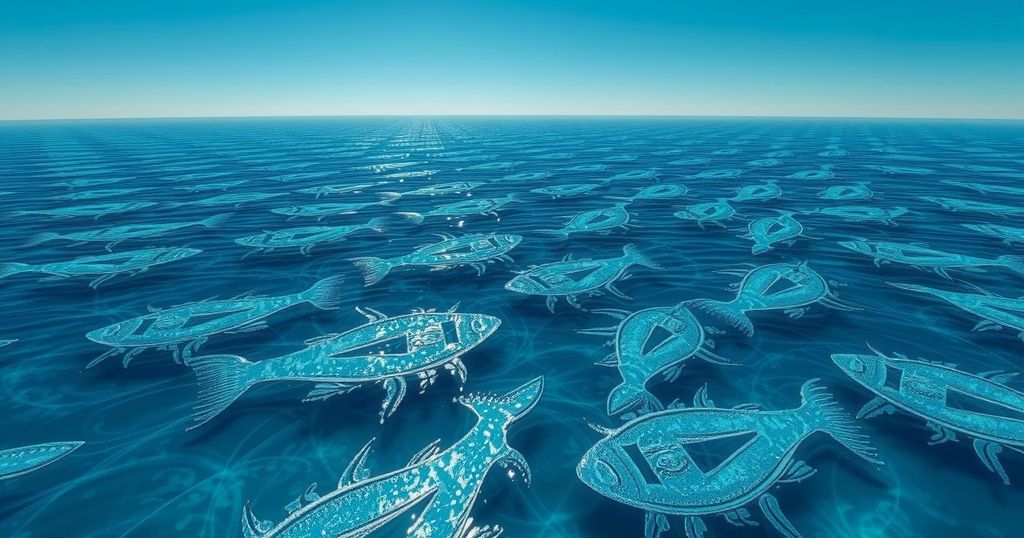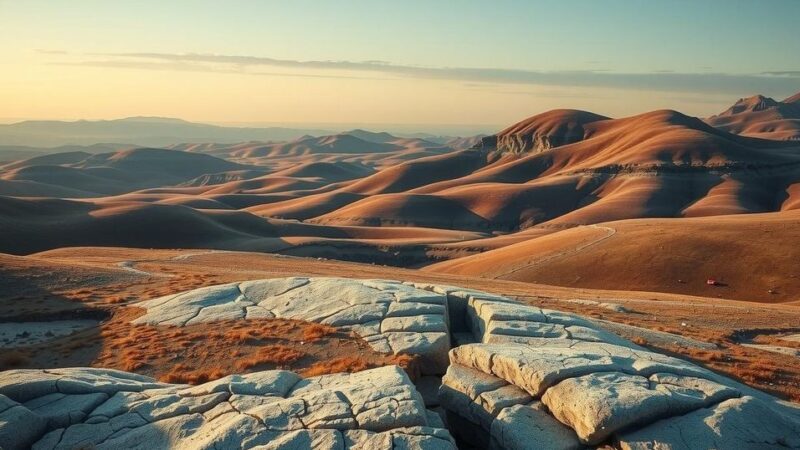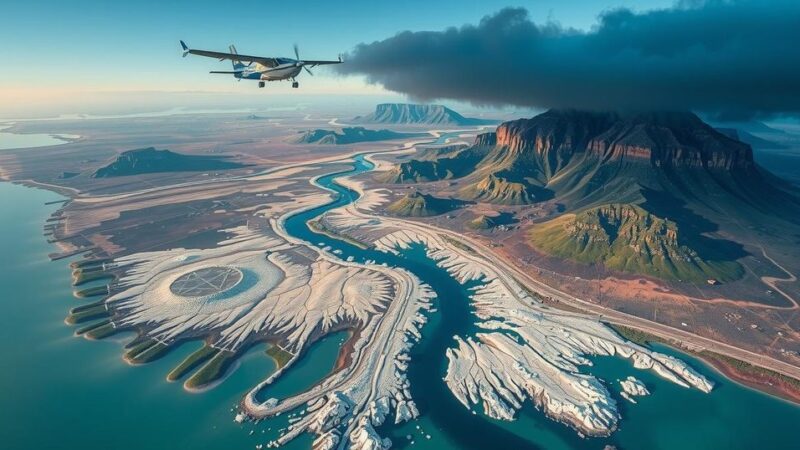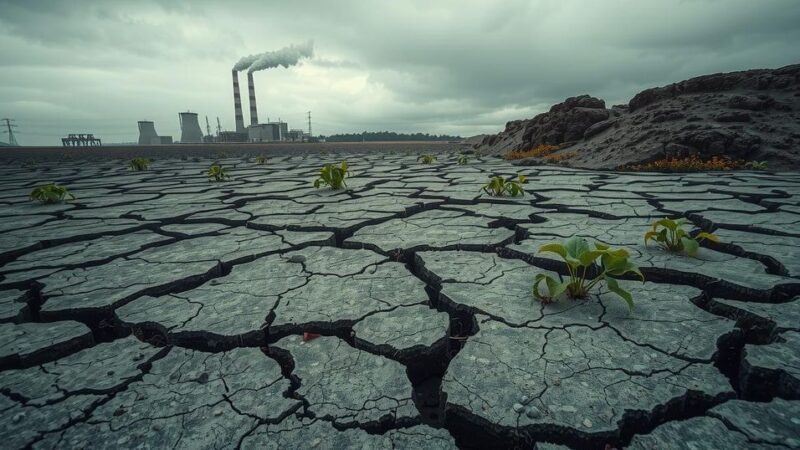An international team is launching the “Krill from Space” project to monitor krill populations around Antarctica using satellite technology. This initiative aims to provide accurate data for sustainable fishing regulations while protecting crucial marine ecosystems. Krill, despite their small size, play a significant role in the marine food web and the ocean’s carbon cycle. Key partners include WWF, the University of Strathclyde, and the British Antarctic Survey.
An international initiative is being established to monitor krill populations in Antarctic waters using satellite technology. This project aims to provide precise data that will inform fishing regulations in the Southern Ocean. By measuring changes in red coloration of the water, scientists will be able to track these tiny shrimp, which are essential to the marine food chain.
Krill serve as a critical food source for various marine species, including humpback and blue whales, squid, and penguins. During peak periods, they can populate at densities of up to 10,000 individuals per cubic meter, creating a remarkable visual effect that can be observed from space.
The project, named “Krill from Space,” was unveiled during the 26th Conference of the Parties to the Paris Climate Agreement (COP26) held in Baku, Azerbaijan. Key partners in this endeavor include the World Wildlife Fund (WWF), the University of Strathclyde, and the British Antarctic Survey, all devoted to implementing a innovative satellite monitoring program for krill.
Dr. Cait McCarry from the University of Strathclyde explained their method: “We start with seawater, then we add in a krill and take a measurement [of how much light the water absorbs]. Then we add another krill and take another measurement.” This research highlights the immediate need for better management of the fishery and conservation of krill habitats due to the decline of sea ice and increasing industrial fishing activities.
Rod Downie, chief polar advisor at WWF-UK, stated, “With sea ice declining and industrial fishing growing, we urgently need to better manage the fishery and protect krill habitats within a network of marine protected areas.” He emphasized that the “Krill from Space” initiative may be an instrumental tool in monitoring and safeguarding this vital species.
Despite their minute size, krill may be pivotal in the ocean’s carbon cycle, as they feed on phytoplankton, which absorbs carbon dioxide (CO2), subsequently depositing it at the ocean’s depths through their droppings. This natural process could sequester approximately 300,000 metric tons of carbon, equaling the United Kingdom’s daily emissions.
Oceanographic Magazine reports that with increasing sea temperatures and the loss of protective sea ice, the populations of Antarctic krill are dwindling and relocating southward. The acute monitoring approach of the krill project seeks to address these pressing environmental challenges.
David McKee, a Reader in the Department of Physics at Strathclyde, remarked, “This is a ground-breaking effort to develop a new way to monitor krill swarms at the surface where they are known to occur in huge patches that are important feeding grounds for whales and other important marine species.” He expressed anticipation for future advancements in conservation and sustainable management of krill.
In summary, the “Krill from Space” initiative represents a significant advance in marine research and conservation, utilizing satellite technology to monitor a keystone species with critical ecological roles. This collaborative effort underscores the urgency of addressing climate change impacts and sustaining marine biodiversity in the Southern Ocean.
The “Krill from Space” project exemplifies a crucial collaboration aimed at monitoring krill populations essential to various marine species and the carbon cycle. With satellite technology, scientists seek to gather vital data that can influence fishing regulations and protect krill habitats, emphasizing the need for sustainable management practices amidst climate change challenges. This innovative approach could serve as an important tool for conservation efforts in Antarctic waters.
Original Source: www.goodnewsnetwork.org






